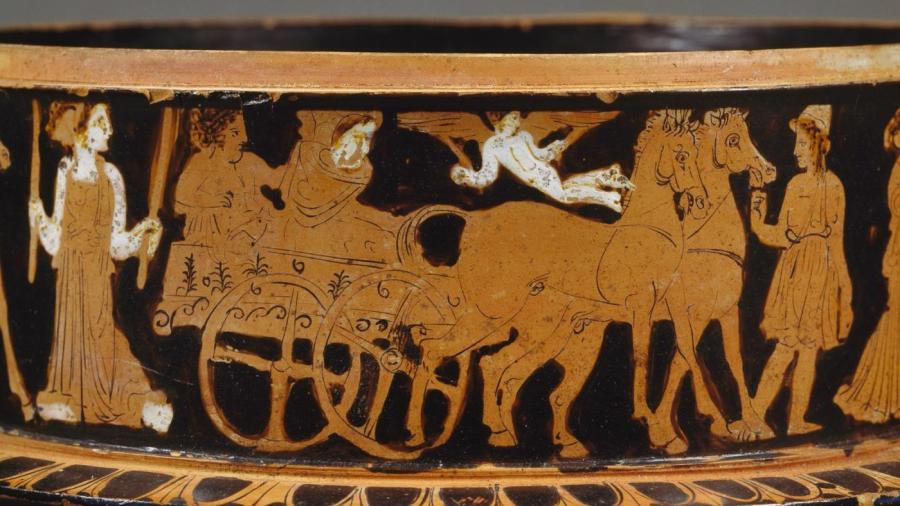What Is the Difference Between Red and Black Figure Pottery?

Red figure pottery consists of red images against a black background, while black figure pottery consists of black pictures against the naturally red color of the vase. The two ancient Greek pottery techniques utilize a similar approach as far as creating the vase and bringing out the desired figures during firing. Red figure pottery was the newer and easier technique of the two, and gradually replaced black figure.
The initial stages are identical for both red and black figure pottery. Potters shape the vase on a wheel, and sometimes assemble the neck, body and foot separately. They leave the vase to dry until it achieves leather hardness.
At this point, the pottery is red. In black figure pottery, potters create the images by adding a slip (liquid clay mixed with pigment) that turns black upon firing. Incising the slip and adding additional color enhancements allows vase painters to add detail to the picture.
In red figure pottery, the images remain the same color as the vase. Instead of adding a black slip for the pictures, vase painters use it for the background. Figures are further enhanced with glaze lines or a brush. The red figure technique emerged around 591 B.C. Because it was much easier for artisans to draw figures in this way, rather than delineate them with incisions as in the black figure technique, red figure pottery became the predominant method in ancient Greece until the late 3rd Century.





